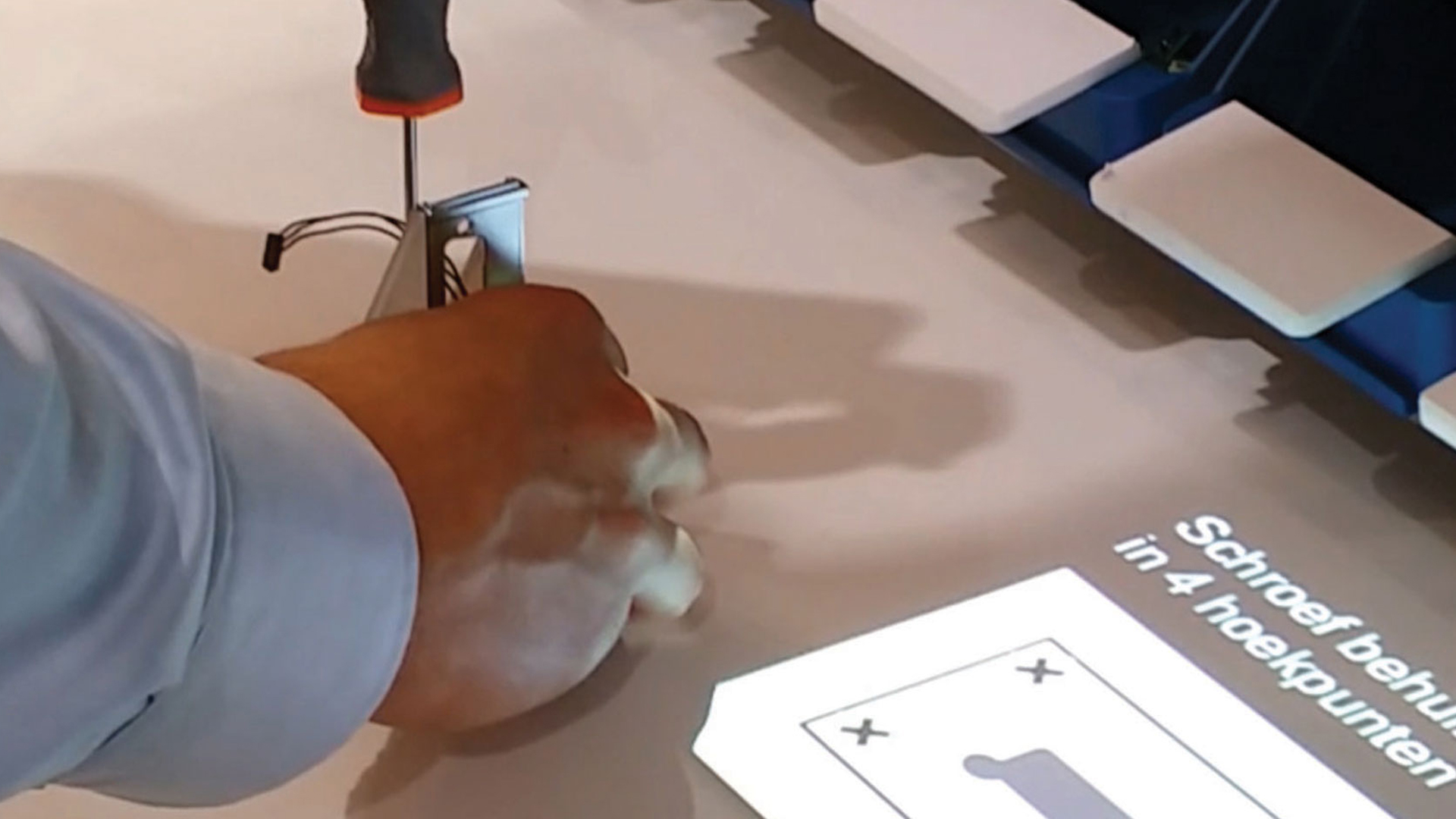Problem
The nature of production is transforming in manufacturing, with ever-changing demands and challenges including:
- Flexible production: different specifications, products, numbers, timings, high-mix, low volume
- Faultless production: first-time-right, ultimate control of quality and resources
- Shorter time-to-market
- Shorter lifecycle of products
- Rapid technological developments: more digitalization and robotization on the
- work floor
With the flexibility that is demanded, people and robots/machines will continue to cooperate. Companies need to be able to deploy to wider target groups (experienced and inexperienced, young and old) quickly and flexibly the defined process, training of the process and the metrics of the process.
Solution
In view of the rapidly changing nature of manufacturing, Netherlands-based TNO has integrated an operator support system in a manual assembly workplace using Light Guide Systems’ augmented reality (AR) projected work instructions as part of their TKI project Flexible Assembly Cell. This system helps these companies to perform fast, flexible and faultless assembly of different products.
Results from this TKI project Flexible Assembly Cell will be used in the Flexible Manufacturing Fieldlab that is part of the Smart Industry Program Factory of the Future at Brainport Industries. Field labs are real-life environments in which knowledge and education institutions, production companies, developers and suppliers jointly and specifically develop, test, implement and learn to use Smart Industry solutions.
Implementation
TNO has integrated the Light Guide System AR software into an operator support system in a flexible manual assembly workplace. This system, in which projected work instructions help an operator to perform assembly work, has been demonstrated and tested at Bronkhorst High Tech, Omron and TE Connectivity.
Light Guide Systems AR projection enables the correct tray to be illuminated and the assembly instruction is projected directly onto the product or workbench. Operators quickly see which part has to be picked from which tray, and how it must be assembled. Moreover, operators get direct feedback if the wrong part is picked. Navigation through the work instructions is intuitive and is automatically advanced using the Light Guide AR software.
Critical action can be confirmed manually with the aid of virtual buttons projected on the workbench. The system is easy to connect to external systems, such as (3D)Vision, Cobots, PLCs and MES. Production data, such as assembly times and quality information, are captured on every step and written to a database for additional analyses.
The system can be a useful ally in training new employees, but it is also useful for experienced operators when product variants and materials frequently switch and change. The system has different levels, depending on the skills level of the employee. The system can also be equipped with a data model and database for modular work instructions. This link means that work instructions for new assembly activities can be automatically generated from the data model and presented to the system. This can shorten the time needed to make new instructions and can improve the version management.
Outcome
TNO has performed measurements among the three end-user manufacturing companies to ascertain the effectiveness and efficiency of this system compared with digital work instructions via monitors. The effects on the workload of the employees were examined as were their experiences of the projection system. A total of 35 operators took part, and the results of this study are very promising:
- Reduction of the total cycle time by 57%
- Reduction of the pick time by more than 70%
- No errors were recorded in picking components with the aid of Light Guide Systems support (this error percentage for digital work instructions was 8.000 ppm)
- No errors were recorded in placing components with the aid of Light Guide Systems instructions (this error percentage for digital work instructions was 80.000 ppm)
- Compared with screen instructions, projected work instructions reduced the workload for experienced operators by 25

